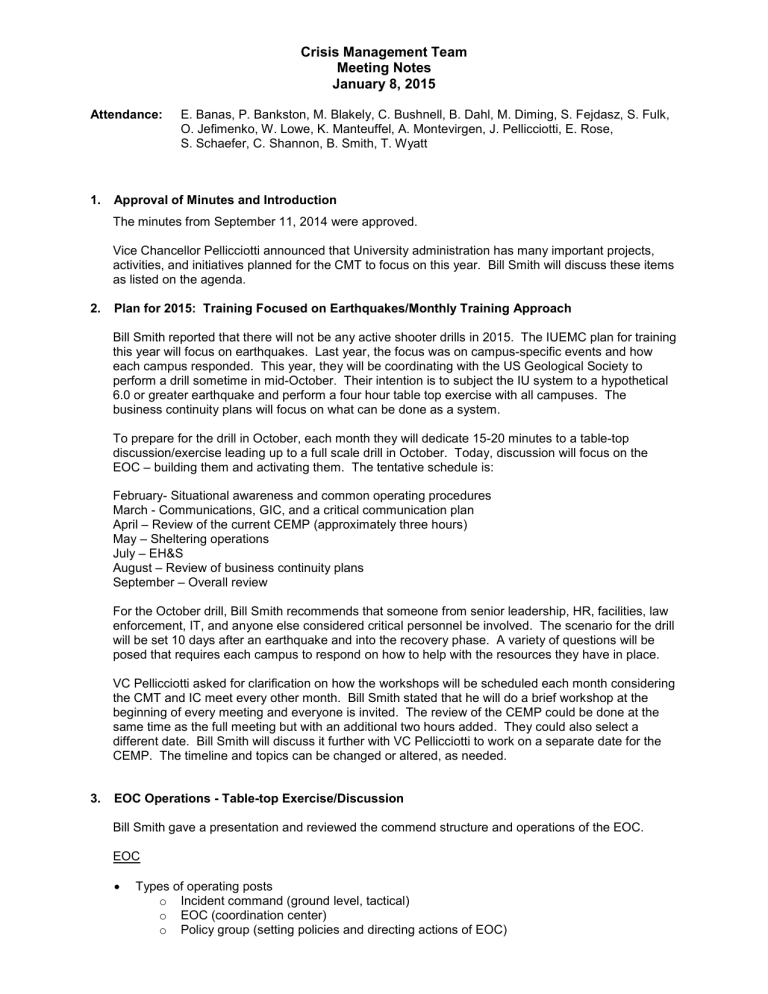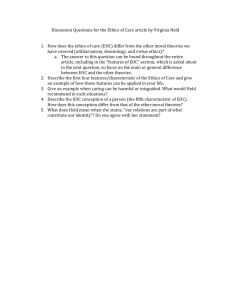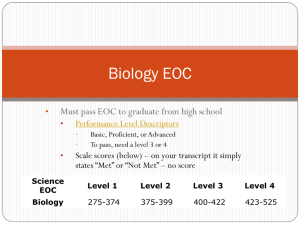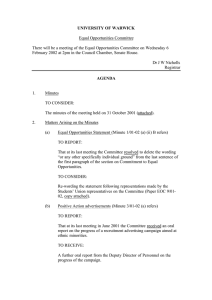Crisis Management Team Meeting Notes January 8, 2015

Crisis Management Team
Meeting Notes
January 8, 2015
Attendance: E. Banas, P. Bankston, M. Blakely, C. Bushnell, B. Dahl, M. Diming, S. Fejdasz, S. Fulk,
O. Jefimenko, W. Lowe, K. Manteuffel, A. Montevirgen, J. Pellicciotti, E. Rose,
S. Schaefer, C. Shannon, B. Smith, T. Wyatt
1. Approval of Minutes and Introduction
The minutes from September 11, 2014 were approved.
Vice Chancellor Pellicciotti announced that University administration has many important projects,
2. Plan for 2015: Training Focused on Earthquakes/Monthly Training Approach activities, and initiatives planned for the CMT to focus on this year. Bill Smith will discuss these items as listed on the agenda.
Bill Smith reported that there will not be any active shooter drills in 2015. The IUEMC plan for training this year will focus on earthquakes. Last year, the focus was on campus-specific events and how each campus responded. This year, they will be coordinating with the US Geological Society to perform a drill sometime in mid-October. Their intention is to subject the IU system to a hypothetical
6.0 or greater earthquake and perform a four hour table top exercise with all campuses. The business continuity plans will focus on what can be done as a system.
To prepare for the drill in October, each month they will dedicate 15-20 minutes to a table-top discussion/exercise leading up to a full scale drill in October. Today, discussion will focus on the
EOC – building them and activating them. The tentative schedule is:
February- Situational awareness and common operating procedures
March - Communications, GIC, and a critical communication plan
April – Review of the current CEMP (approximately three hours)
May – Sheltering operations
July – EH&S
August – Review of business continuity plans
September – Overall review
For the October drill, Bill Smith recommends that someone from senior leadership, HR, facilities, law enforcement, IT, and anyone else considered critical personnel be involved. The scenario for the drill will be set 10 days after an earthquake and into the recovery phase. A variety of questions will be posed that requires each campus to respond on how to help with the resources they have in place.
VC Pellicciotti asked for clarification on how the workshops will be scheduled each month considering the CMT and IC meet every other month. Bill Smith stated that he will do a brief workshop at the beginning of every meeting and everyone is invited. The review of the CEMP could be done at the same time as the full meeting but with an additional two hours added. They could also select a different date. Bill Smith will discuss it further with VC Pellicciotti to work on a separate date for the
CEMP. The timeline and topics can be changed or altered, as needed.
3. EOC Operations - Table-top Exercise/Discussion
Bill Smith gave a presentation and reviewed the commend structure and operations of the EOC.
EOC
Types of operating posts o Incident command (ground level, tactical) o EOC (coordination center) o Policy group (setting policies and directing actions of EOC)
EOC Workshop
Event vs. incident scenario
Phases of event or incident
Identify the plan and evaluate the need
When and where to activate the EOC
EOC focus during event or incident
What is needed
When to deactivate
Review and evaluate
A directive for 2015 is in place for all commencement exercises to have an emergency action plan.
Bill Smith will provide more information in the future on the IU Northwest plan.
In planning the EAP for commencement:
Need basic information for commencement (date, time, location, building, etc.)
Identify and establish a process for potential threats
Anticipate and prepare for potential threats
Identify resources needed that cannot be filled internally
Prepare for potential problems (alternate location)
Review concerns that may exist for the 2015 commencement (protests)
Scenario - fire in the Library:
Find out where it’s located and basic information of location
Determine potential threats and concerns based on location
Coordinate area specific information with local fire department
Activate internal resources: Alarms, lights, pull systems
Coordination of evacuation plans
Accountability of people
Traffic concerns
Determine who should be in the EOC
Specific information needed by the EOC
Critical communications needed
Command structure of EOC
Authority to close the campus
Frequency of informational updates and media outlets
Notifications to campus
Determination of continued campus closures based on damage
Procurement of equipment and finances
A training handout for upcoming exercises was distributed. Bill Smite noted that upcoming training will review the state’s common operating platform referred to as WebEOC.
Meeting Adjourned
Submitted by Jackie Peyton
Page 2





